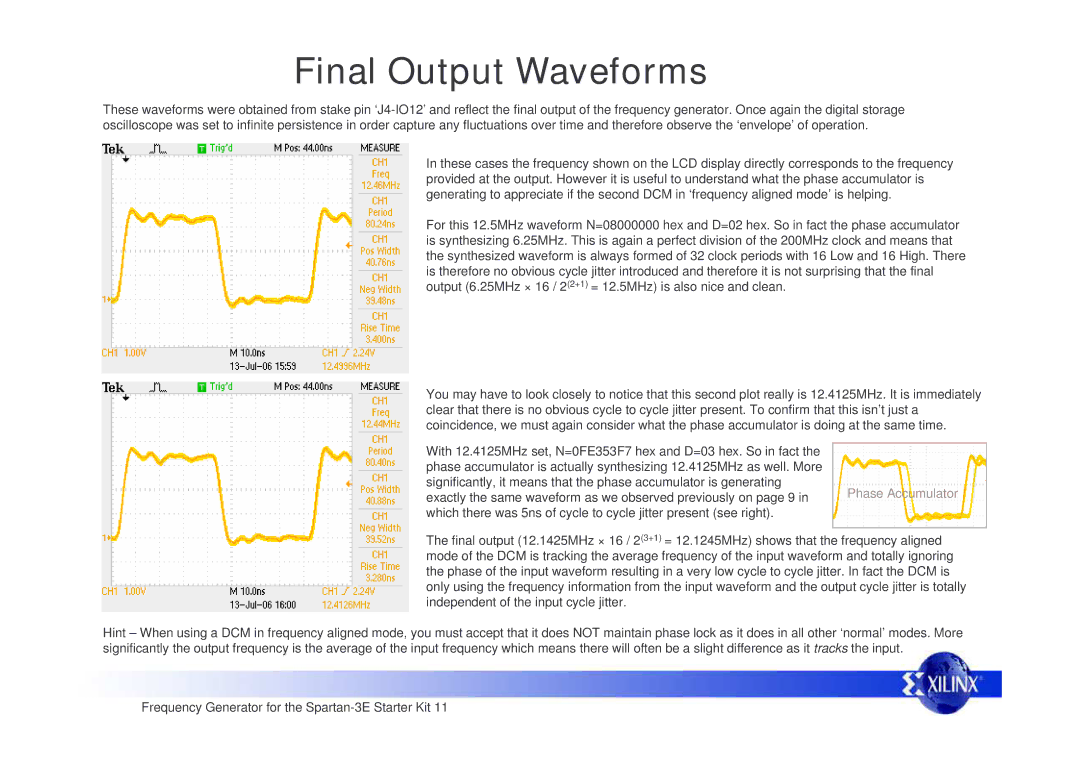Frequency Generator specifications
The Xilinx Frequency Generator is a versatile and robust solution designed for a variety of applications requiring precise frequency generation and control. This device capitalizes on Xilinx's proven technology in programmable logic, enabling engineers to implement custom frequency generation schemes tailored to specific application needs.One of the main features of the Xilinx Frequency Generator is its flexible frequency range. It supports a wide spectrum of frequencies, making it suitable for applications in telecommunications, aerospace, automotive, and industrial automation. The ability to generate frequencies from kilohertz to gigahertz opens up possibilities for diverse scenarios, such as clock generation, signal synthesis, and modulation tasks.
Another significant characteristic of this frequency generator is its programmability. Leveraging Xilinx's FPGA architecture, users can easily configure and program the frequency generator to meet changing requirements. This programmability allows for rapid prototyping and design iterations, enabling engineers to achieve optimal configurations with minimal downtime.
The device also employs advanced phase-locked loop (PLL) technology, ensuring excellent stability and low phase noise. PLLs enable the generation of output frequencies that are phase-coherent with an input signal, which is critical for applications requiring precise synchronization. This feature is especially beneficial in communication systems, where accurate timing and frequency stability are essential.
Furthermore, the Xilinx Frequency Generator supports multiple output formats, including sinusoidal, square, and triangle waves. This versatility in signal output enhances its usability across different applications, allowing for easy integration into existing systems.
Another innovative aspect of this frequency generator is its integration with Xilinx's software tools, such as Vivado and ISE. These tools facilitate the design, simulation, and implementation of frequency generation strategies, enhancing productivity and ensuring robustness in design processes.
In addition, the frequency generator's power efficiency is noteworthy. By employing cutting-edge low-power design techniques, it reduces energy consumption without compromising performance, making it an ideal choice for battery-powered or energy-sensitive applications.
All in all, the Xilinx Frequency Generator exemplifies cutting-edge technology in frequency generation, offering flexible configuration, excellent stability, and user-friendly integration, making it a compelling choice for engineers across various industries seeking a reliable frequency generation solution.

